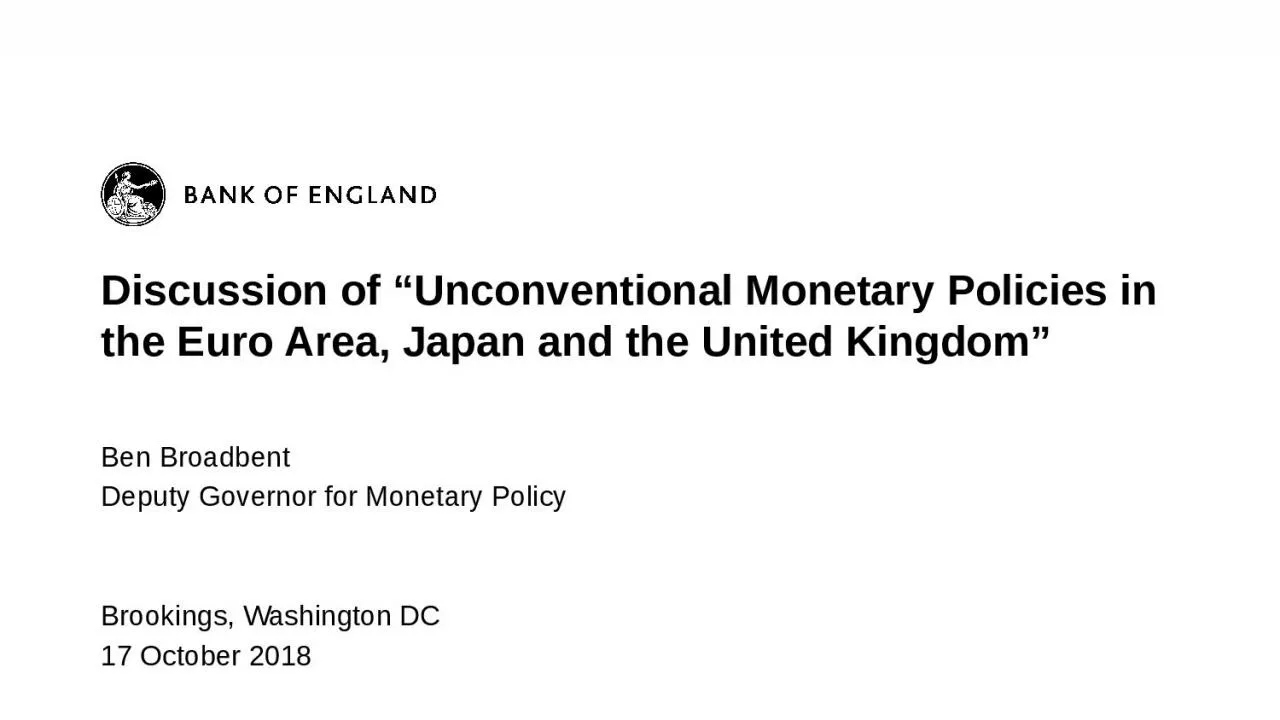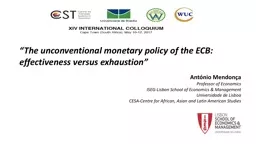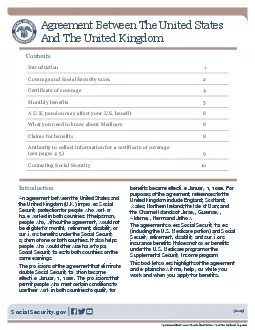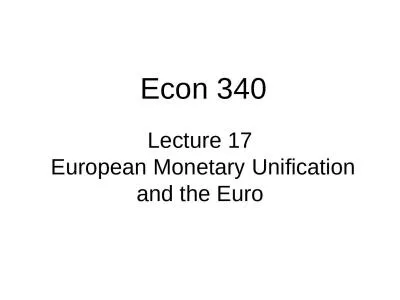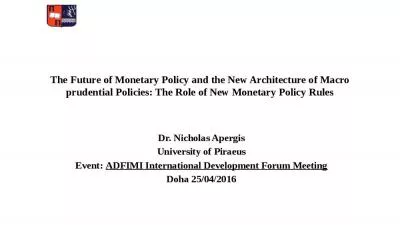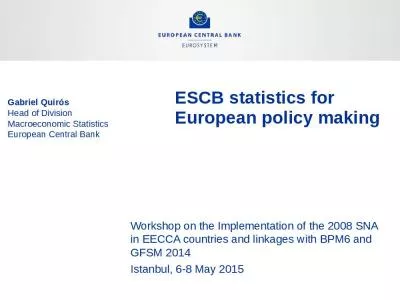PPT-Discussion of “Unconventional Monetary Policies in the Euro Area, Japan and the United
Author : phoebe | Published Date : 2024-01-03
Ben Broadbent Deputy Governor for Monetary Policy Brookings Washington DC 17 October 2018 Three main conclusions QE more powerful in periods of heightened financial
Presentation Embed Code
Download Presentation
Download Presentation The PPT/PDF document "Discussion of “Unconventional Monetary..." is the property of its rightful owner. Permission is granted to download and print the materials on this website for personal, non-commercial use only, and to display it on your personal computer provided you do not modify the materials and that you retain all copyright notices contained in the materials. By downloading content from our website, you accept the terms of this agreement.
Discussion of “Unconventional Monetary Policies in the Euro Area, Japan and the United: Transcript
Download Rules Of Document
"Discussion of “Unconventional Monetary Policies in the Euro Area, Japan and the United"The content belongs to its owner. You may download and print it for personal use, without modification, and keep all copyright notices. By downloading, you agree to these terms.
Related Documents

